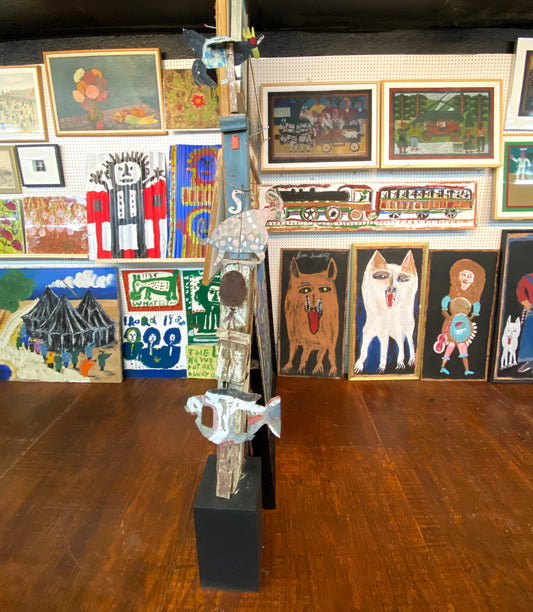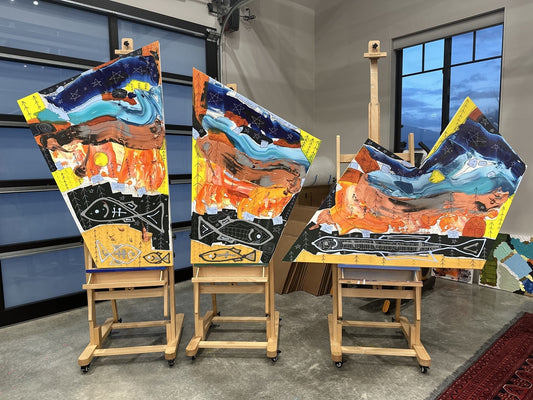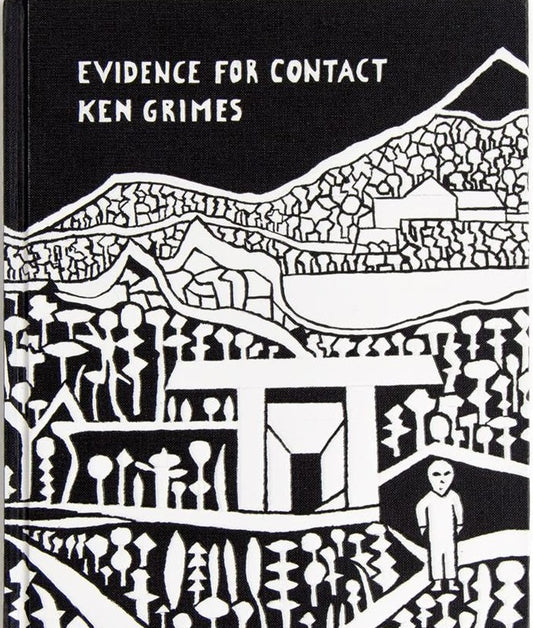MT Liggett
(1933–2017)
On August 17, 2017, Kansas artist MT Liggett died at the age of 86. Widely known for creating politically charged metal totems, MT Liggett was an outspoken curmudgeon who didn’t shy away from confrontation. Whirling and spinning along miles of pasture fence line along US Highways 400 and 54 in southwest Kansas, his work was a bright spot of belligerence in an increasingly bucolic world.

photo © Ted Degener
Born Myron Thomas Liggett on December 28, 1933, he joined the Navy in 1948, and then served in the United States Air Force from 1957 until 1971. In 1987, he settled in Mullinville, his hometown, where he would create his ever-expanding art installation. His formal education focused on political science, an influence reverberating throughout his work.
His 20-acre roadside property became home to over 300 metal totems lampooning politicians, officials and anyone else who caught his critical eye. The subjects of his work ranged from local councilmen to international figures, changing with election cycles and societal tides. Often mistaken for a conservative, MT was an equal opportunity offender, pointing out hypocrisy and indiscretion regardless of party affiliation. His figures reflected his personality – smart, witty, sometimes biting, but always with a genuine heart at the core.
Continually questioning and provoking, Liggett’s work expands beyond politics. The pieces reference Greek mythology, personal biographies (including numerous portraits of his romantic interests) and bold statements designed to make visitors question their place in the world. He had a deep desire to provoke not just thought but action. In a 2013 interview, he explained the power of the creative: “See, where you’re an artist, you can just do any damn thing you wanna do. And you’re a damned fool if you don’t.”
Liggett was happy to guide people through his roadside commentary, revealing an approachable engaging man. His health had been on the decline in recent years, slowing his creative output but not the desire to share his work. Before his death, MT set up a board of trustees to make sure his work would be preserved in situ, continuing their whirling, clanking, glorious cultural critique on the sweeping Kansas prairie.
by Erika Nelson


